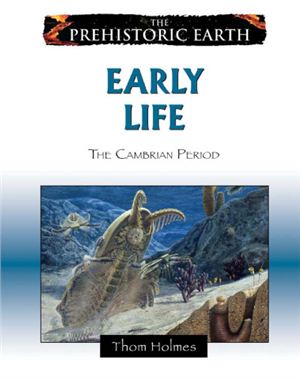Chelsea House Publications, 2008. - 224 pages. Series "The
Prehistoric Earth"
The first bursts of life found in the fossil record were single-celled bacteria and algae, the foundation of life that led to the extraordinary cavalcade of organisms that have walked the stage of Earth ever since. From the initial signs of life in the Precambrian Period to the end of the Cambrian Period about 488 million years ago, "Early Life" explores the development of early life that culminated in one of the most extraordinary periods in the evolution of life on Earth. Characterized as a "biological big bang," the Cambrian Period was a relatively short span of time during which nearly all basic forms of animal life that still exist first appear in the fossil record of the ancient oceans. Alien-looking marine creatures developed in the oceans, and the first predators began hunting down other species in a biological "arms race" that pitted elegant strategies for defense against increasingly efficient means of attack.
The first bursts of life found in the fossil record were single-celled bacteria and algae, the foundation of life that led to the extraordinary cavalcade of organisms that have walked the stage of Earth ever since. From the initial signs of life in the Precambrian Period to the end of the Cambrian Period about 488 million years ago, "Early Life" explores the development of early life that culminated in one of the most extraordinary periods in the evolution of life on Earth. Characterized as a "biological big bang," the Cambrian Period was a relatively short span of time during which nearly all basic forms of animal life that still exist first appear in the fossil record of the ancient oceans. Alien-looking marine creatures developed in the oceans, and the first predators began hunting down other species in a biological "arms race" that pitted elegant strategies for defense against increasingly efficient means of attack.

